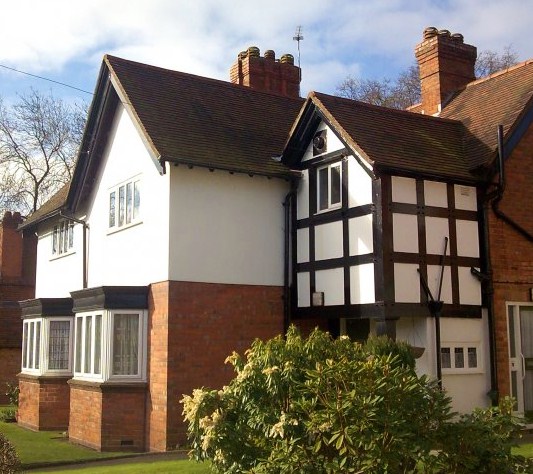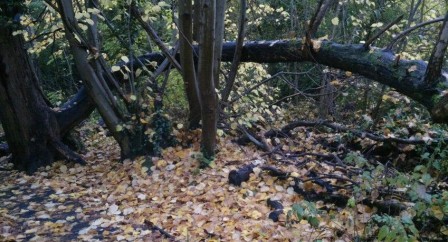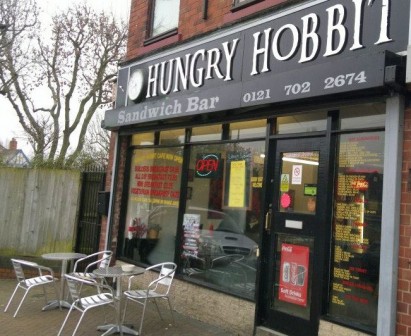Tolkien’s Hobbit Against Big Money
Never think that big money can buy everything. It can buy yes-people. It can buy governments. But it cannot buy the passion of a community that sticks together. It was a community that stuck together that saved Moseley Bog. In 1980, a campaign was initiated to prevent developers from building on a stretch of land between the island near Swanshurst Park and the Covered Wagon public house: a stretch of land now known as Joy’s Wood. In the seventies, this was designated as a landfill site but was later turned into football fields. That was when the developers saw an opportunity.
Joy’s Wood in 1980 was an extension of Moseley Bog, a site of outstanding natural beauty, rich in fauna and flora, with historical attachments to the Industrial revolution, having connections to Matthew Boulton and John Baskerville, and more recently having in its environs the childhood home of J. R. R. Tolkien, fantasy author of Lord of the Rings and The Hobbit. This rich history and the precious wildlife were both cited in the campaign to save Moseley Bog. It was a campaign led by the late Joy Fifer, who had lived in the area all her life. “Save Moseley Bog” ran for ten years or more, and in 2001 Joy was awarded an MBE (Member of the Most Excellent Order of the British Empire) for her contribution to conservation of the area, and the wood was named after her. She died in 2002.
Joy did not run this local campaign alone. An alternative arts newspaper serving Moseley community helped keep the pressure on, and the Moseley Bog Conservation Group is still going today, keeping an eye open to make sure the bog stays free from speculators and remains an area of outstanding natural beauty. In 2010, the Heritage Lottery Fund awarded £376,500 towards making the area more accessible for everybody, with the inclusion of disabled access. The house in which Tolkien lived was, at the time he lived there, in the village of Sarehole, now swallowed up by the sprawling conurbation of the City of Birmingham. He was born in South Africa, but when his father died, the family moved back to the outskirts of the city.
The village of Sarehole is thought to have inspired Hobbiton in Tolkien’s fiction, and the mill featured in The Hobbit and Lord of the Rings is likely to have been based on Sarehole Mill. Sarehole Mill was once in possession of the father of Birmingham industrialist Matthew Boulton (1730-1808), who might be considered the father of the industrial revolution. Boulton himself was also friendly with the famous type-founder John Baskerville (1706-75), whose elegant fount still carries the Baskerville name. Both were members of the famous Lunar Society, and Boulton was responsible for the first steam-driven factory that gradually replaced water wheels. Sarehole Mill was for years in the possession of the Eaves family, who were corn-millers.
The miller’s wife Sarah Eaves was left to cope on her own when her husband abandoned her, and Baskerville, never a slave to convention, moved her in with him. This caused gossip all over town. Although they were unmarried for years, she was known as Mrs Baskerville, and when her husband died she really did become Mrs Baskerville. Boulton and Baskerville both knew a bit about big business, and Boulton built the biggest manufactory in the world at the Soho Works. It had showrooms that all the nobility of Europe visited.
The latest threat to Sarehole
Big businessmen never miss an opportunity to add to their wealth, and recently a new campaign was initiated in the area in an effort to fight off a US company. About three hundred yards from where Tolkien lived, and about the same distance from Sarehole Mill, is a cafe called the Hungry Hobbit, which takes its name from Tolkien’s dwarfish character. It is not a big cafe, but it serves the local community and visitors to the area with equal hospitality. In 2011, however, the Saul Zaentz Company (SZC), based in California, instructed the Hungry Hobbit to change its name. Why? The reason is — and you are forgiven for thinking this is some kind of joke — SZC is said to legally own the brand name Hobbit.
This is the world in which we live today, a world where reality is even stranger than the fiction that created it. How can a company in California, where Tolkien never based any of his characters or place names, own the brand name for characters and places created by him here in England? How can any fictional entity be the sole reserve of one company? What kind of sense is there to this? Matthew Boulton and other pioneers of the industrial revolution believed in the free exchange of ideas, which is one of the things that made them so successful. Unfortunately Saul Zaentz Company is a protectionist company that has made no contribution to society whatsoever.
It makes no exception for small businesses. Paul Zaentz from SZC has suggested that, if small businesses make infringements to their brand names, bigger companies could do the same based on this precedent. The proprietor of the Hungry Hobbit claims that to change the name would mean changing menus, aprons, the cafe sign and everything connected with it. Wendy Buss is having an ongoing dialogue with SZC lawyers but would find herself at a big financial disadvantage should the matter ever go to court.
A Facebook page has been set up called “Campaign to save the Hungry Hobbit”. It has nearly 3,500 likes: that is, 3,500 people telling SZC they are in the wrong. This pales into insignificance when judged against The Hobbit pub in Southampton, which has a Facebook following of almost 12,000. The Hobbit pub is also facing legal action from SZC. Much of its successful campaign has been built on the popularity of actor, writer and quiz-show host Stephen Fry who, together with actor Sir Ian McKellen, have put their collective weight behind the pub’s petitioning.
What is even more unbelievable is that this California based company SZC has recently registered the name “Shire” as a brand. This is verging on the ridiculous. Nearly every county in England ends in shire. Historians would tell you that even earlier in their existence the counties were referred to as the Shire of Stafford or the Shire of Lancaster. This word is not one created by Tolkien. They will never make it stick. Or will they?
Editor’s Note: All photographs by John Goss.
Related Articles























2 Responses to Tolkien’s Hobbit Against Big Money
You must be logged in to post a comment Login